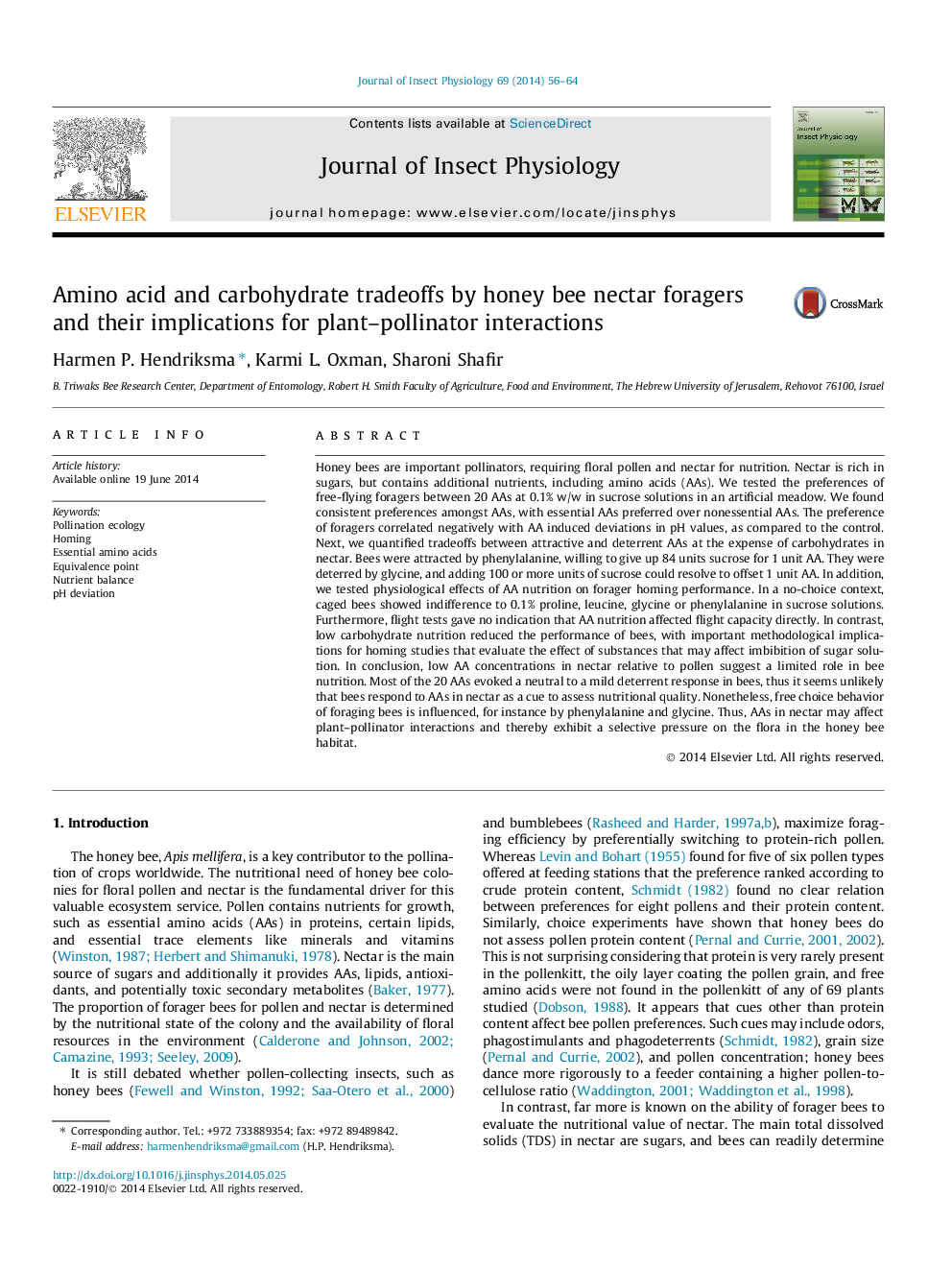| کد مقاله | کد نشریه | سال انتشار | مقاله انگلیسی | نسخه تمام متن |
|---|---|---|---|---|
| 5921614 | 1571001 | 2014 | 9 صفحه PDF | دانلود رایگان |

- Amino acids in artificial nectar elicit preferences from honey bee foragers.
- Amino acid identity, pH, and essentiality explain preferences of bees.
- A honey bee forager is willing to pay a premium of carbohydrates for amino acids.
- Carbohydrate nutritional state affects flight performance of foraging bees.
Honey bees are important pollinators, requiring floral pollen and nectar for nutrition. Nectar is rich in sugars, but contains additional nutrients, including amino acids (AAs). We tested the preferences of free-flying foragers between 20 AAs at 0.1% w/w in sucrose solutions in an artificial meadow. We found consistent preferences amongst AAs, with essential AAs preferred over nonessential AAs. The preference of foragers correlated negatively with AA induced deviations in pH values, as compared to the control. Next, we quantified tradeoffs between attractive and deterrent AAs at the expense of carbohydrates in nectar. Bees were attracted by phenylalanine, willing to give up 84Â units sucrose for 1Â unit AA. They were deterred by glycine, and adding 100 or more units of sucrose could resolve to offset 1Â unit AA. In addition, we tested physiological effects of AA nutrition on forager homing performance. In a no-choice context, caged bees showed indifference to 0.1% proline, leucine, glycine or phenylalanine in sucrose solutions. Furthermore, flight tests gave no indication that AA nutrition affected flight capacity directly. In contrast, low carbohydrate nutrition reduced the performance of bees, with important methodological implications for homing studies that evaluate the effect of substances that may affect imbibition of sugar solution. In conclusion, low AA concentrations in nectar relative to pollen suggest a limited role in bee nutrition. Most of the 20 AAs evoked a neutral to a mild deterrent response in bees, thus it seems unlikely that bees respond to AAs in nectar as a cue to assess nutritional quality. Nonetheless, free choice behavior of foraging bees is influenced, for instance by phenylalanine and glycine. Thus, AAs in nectar may affect plant-pollinator interactions and thereby exhibit a selective pressure on the flora in the honey bee habitat.
Journal: Journal of Insect Physiology - Volume 69, October 2014, Pages 56-64